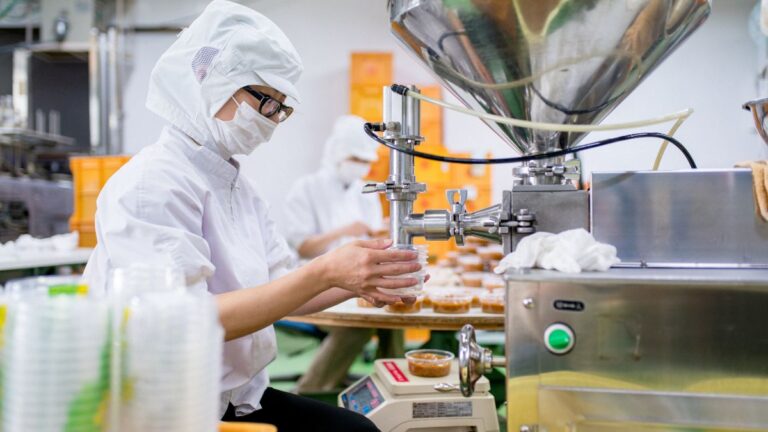The Hidden Diabetes Risk on Your Plate
When most people think about type 2 diabetes, sugar is the first thing that comes to mind. Sodas, desserts, and sugary snacks get the blame.
But research shows another major contributor that often flies under the radar: ultra-processed meats like bacon, sausage, hot dogs, and deli slices.
Large global studies1 show that eating these meats regularly can raise diabetes risk as much as or more than a daily sugary drink. If this is new to you, plenty of people are just now finding out the same thing.
How Processed Meats Throw Off Blood Sugar
Type 2 diabetes doesn’t happen because of one single food or one single nutrient. It’s more like a chain reaction. Processed meats set off a bunch of those reactions at once, which is why they stand out in studies2.
Here’s how that happens:
1. The Additives Inside
Processed meats are loaded with preservatives like nitrates, nitrites, and extra sodium. These keep the meat looking pink and tasting fresh long after it should.
Inside the body, those preservatives can turn into substances that irritate cells and stir up inflammation. When inflammation is high, your body has a harder time using insulin. That means sugar stays in your blood instead of moving into your cells for energy.
It’s important to note that nitrates and nitrites aren’t always bad. They occur naturally in vegetables and are safe in normal amounts. It just becomes concerning when they build up from foods like processed meats, where higher levels over time can raise health risks.
2. The Type of Fat They Carry
These meats also tend to be high in saturated fat. This is the kind of fat that is solid at room temperature.
- Too much of it makes insulin less effective.
- It also fuels low-level inflammation that keeps your blood sugar higher.
Put the two together and you get a steady push toward insulin resistance, one of the main steps toward type 2 diabetes. This often develops in people living with obesity, which is why nutrition and movement play such an important role.
3. What Happens During Cooking
Think about how these foods are usually prepared: frying, grilling, or smoking. High heat creates harmful byproducts like heterocyclic amines (HCAs) and advanced glycation end products (AGEs)3. The names are technical, but the effect is simple: they damage the pancreas (the organ that makes insulin) and add even more inflammation to the mix. Even if you cook carefully, once a food is heavily processed, these byproducts are hard to avoid4.
4. What They Push Off Your Plate
Every time processed meat fills your plate, something else is usually missing, like vegetables, whole grains, beans, or fruit.5
- That means less fiber to slow down blood sugar spikes.
- It also means fewer vitamins and minerals that help your body handle stress and inflammation.

How the Risk Builds Up
This is not about the slice of bacon you eat once in a while on a weekend. The trouble comes from what you eat most days.
- Research shows that even one extra serving a day can raise the risk of type 2 diabetes by 15 to 46%.
- People who eat the largest amounts over many years face up to a 62% higher risk compared to those who rarely eat them.
Each serving adds a little more pressure on your blood sugar system until the body just can’t keep up. The more often these foods are part of your daily meals, the harsher their negative impact can be.
What the Big Studies Show
Researchers have followed hundreds of thousands of people for decades to see how different foods affect diabetes risk.6 The pattern they keep finding is:
- Processed meats raise diabetes risk more quickly and sharply than fresh red meat.
- Ultra-processed foods, like deli meats, bacon, sugary drinks, and ready-to-eat meals, have the strongest negative effects.
- People who build more of their protein from plants, like beans, lentils, or nuts, consistently show a lower risk.
These findings have been repeated across many countries and cultures, so they are not just about one style of eating or one location. No matter the culture or cuisine, the more often processed meats are part of daily meals, the higher the chance of developing type 2 diabetes.
How to Start Protecting Yourself
You do not need to give up all meat to protect your blood sugar. A few changes make a big difference.
Build More Plant Protein into Meals
- Beans, lentils, and chickpeas
- Tofu or tempeh
- Nuts and seeds as snacks or salad toppers
Choose Fresh, Lean Meats
- Skinless chicken or turkey
- Lean cuts of beef or pork cooked at moderate heat
- Fish such as salmon or cod
Plan Your Week
- Swap a bacon breakfast for scrambled eggs and avocado.
- Use shredded chicken or canned tuna instead of deli slices for sandwiches.
- Serve bean-based chili or a veggie or lentil soup a couple of nights per week.
Each swap lowers chemical additives and saturated fat while adding protein, fiber, and nutrients.
Common Things to Avoid
- Trusting “natural” deli meats: Labels like “uncured” or “all-natural” often just mean different preservatives were used. They still count as ultra-processed.
- Thinking small servings are harmless: Daily habits matter more than portion size. Risk rises with every extra serving over time.
- Replacing processed meat with refined carbs: Swapping sausage for white bread or sugary cereals will not help blood sugar control.
A Quick Weekly Checklist
- Buy fresh cuts of chicken, fish, or lean beef (canned tuna works, too).
- Add beans or lentils to at least two meals.
- Replace at least three processed meat breakfasts or lunches with whole-food options.
- Try one new plant-based recipe.
Every small step helps. Your body responds quickly when inflammation drops and insulin sensitivity improves.
FAQs
Do I need to stop eating red meat?
No. Lean cuts of beef or pork that you cook yourself are different from ultra-processed meats. Enjoying them in reasonable amounts is not linked to the same risk.
What about plant-based deli slices?
Some are lower in saturated fat, but many still pack in sodium and other additives. They are fine as an occasional choice, just not something to eat every day.
How soon will I feel a difference if I cut back?
Your body can start to respond within weeks. Many people see improvements in blood sugar and less inflammation after making steady, consistent changes.
Is there a safe way to keep sandwiches on the menu?
Yes. If you enjoy sandwiches or quick lunches, you don’t have to give them up. Try roasting a turkey or chicken breast at home and slicing it yourself. You’ll skip the preservatives and extra sodium that come with packaged deli meat, but still have ready-to-eat slices for sandwiches, wraps, or salads. Store the cooked slices in an airtight container for up to 5 days or freeze some for later.
Bottom Line
Type 2 diabetes is not just about sugar. Processed meats like bacon, sausage, hot dogs, and deli slices add stress to your blood sugar system. Their preservatives, unhealthy fats, and high-heat cooking byproducts create inflammation and make it harder for insulin to work the way it should.
You can lower that risk with simple, steady changes. Trade a few meals each week for fresh meats you cook yourself or plant proteins like beans and lentils. Fill more of your plate with vegetables and whole grains. Small shifts like these give your body a break and help keep blood sugar steady for the long run.
Resource
- Männistö S, Kontto J, Kataja-Tuomola M, Albanes D, Virtamo J. High processed meat consumption is a risk factor of type 2 diabetes in the Alpha-Tocopherol, Beta-Carotene Cancer Prevention study. Br J Nutr. 2010 Jun;103(12):1817-22. doi: 10.1017/S0007114510000073. Epub 2010 Feb 26. PMID: 20187985; PMCID: PMC3496924. https://pmc.ncbi.nlm.nih.gov/articles/PMC3496924/ ↩︎
- Harvard T.H. Chan School of Public Health | Red meat consumption associated with increased type 2 diabetes risk https://hsph.harvard.edu/news/red-meat-consumption-associated-with-increased-type-2-diabetes-risk/ ↩︎
- Xue Han, Zihang Shi, Zhen Wu, Xiaoqun Zeng, Yangying Sun, Kaiyong Yao, Qingwu Shen, Xiankang Fan, Jie Luo, Daodong Pan, AGEs in cooked meat: Production, detection, and mechanisms of its inhibition by plant extracts,
Food Research International, Volume 207, 2025, 116067, ISSN 0963-9969, https://doi.org/10.1016/j.foodres.2025.116067. (https://www.sciencedirect.com/science/article/pii/S0963996925004041) ↩︎ - NIH National Cancer Institute | Chemicals in Meat Cooked at High Temperatures and Cancer Risk | https://www.cancer.gov/about-cancer/causes-prevention/risk/diet/cooked-meats-fact-sheet ↩︎
- University of Cambridge | Red and processed meat consumption associated with higher type 2 diabetes risk | https://www.cam.ac.uk/research/news/red-and-processed-meat-consumption-associated-with-higher-type-2-diabetes-risk ↩︎
- Malik VS, Li Y, Tobias DK, Pan A, Hu FB. Dietary Protein Intake and Risk of Type 2 Diabetes in US Men and Women. Am J Epidemiol. 2016 Apr 15;183(8):715-28. doi: 10.1093/aje/kwv268. Epub 2016 Mar 28. PMID: 27022032; PMCID: PMC4832052. https://pubmed.ncbi.nlm.nih.gov/27022032/ ↩︎
Photo Credits
Processed cold meat by Grafvision from Getty Images
Assorted Sliced Fruits by Jane Trang Doan from Pexels
This article is for educational purposes and is not intended to replace medical consultation. Always consult a healthcare professional before making health-related decisions.
Most programs teach exercise.
The Remedy Method retrains how your body communicates: how your brain, muscles, and movement work together again after change.
It blends corrective exercise, Pilates control, and progressive strength in a way that helps your body relearn balance, rebuild strength, and move with confidence again.
If your body feels different and you’re not sure where to start, this is the method designed for exactly that.










